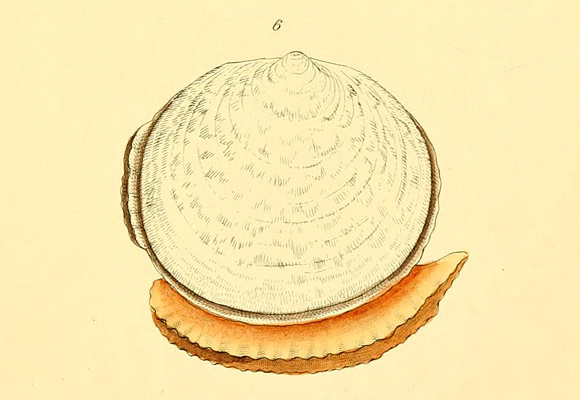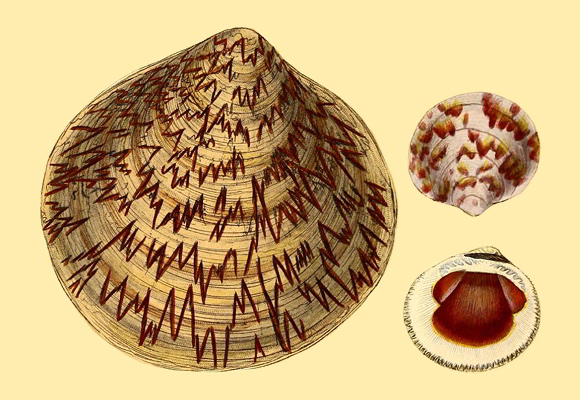
« This species is found, of a large size, in the Mediterranean sea; those which inhabit the English coast, as Falmouth and Cornwall, rarely exceed the size of the smallest specimen we have represented. It is found likewise on the shores of Guernsey, and the coast of Ireland, where it is called the dog’s cockle. » In fact, large Gl. glycylmeris can be found just offshore, while these small shells at right, with this so different pattern, are always fished during low tides, along the shores. They show rather different characteristics, which can lead to separate them from the pure glycymeris.
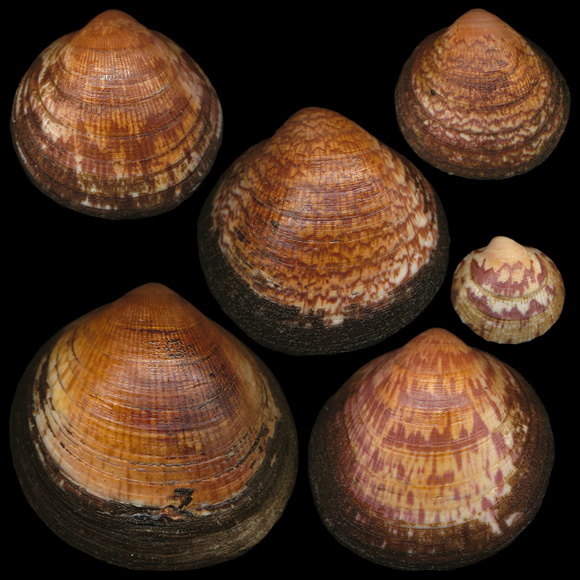
Specimens collected at extreme low tide, on remote sans banks in submerged coves among reefs, off Les Ébihens island, Pointe du chevet, Saint-Jacut de la mer, N. Brittany, NW. France. 19,5-52mm. The only way to separate these shells from pure glycymeris, especially when the groups live in syntopy like here, involves determining wether the following criteria are matched: small adult = “pilosa”, large adult = glycymeris; minimum of 60 small crenations spread over all the margins = “pilosa”, maximum of 50 large ones more concentrated on the ventral = glycymeris.
It seems that the other characteristics, such as the longitudinal obscure reddish lines, can be shared by the two groups. For example, the main pattern, in these “pilosa-like”, often shows larger herringbones than in glycymeris… but not always. This is the reason why many ancient drawings of northern glycymeris show one of these “pilosa”, which could have led to absorbing these local populations into the epithet glycymeris, especially as the periostracum of true pilosa does not show, here, the spectacular covering of mediterranean specimens… But it exists. See below.
It seems that the other characteristics, such as the longitudinal obscure reddish lines, can be shared by the two groups. For example, the main pattern, in these “pilosa-like”, often shows larger herringbones than in glycymeris… but not always. This is the reason why many ancient drawings of northern glycymeris show one of these “pilosa”, which could have led to absorbing these local populations into the epithet glycymeris, especially as the periostracum of true pilosa does not show, here, the spectacular covering of mediterranean specimens… But it exists. See below.
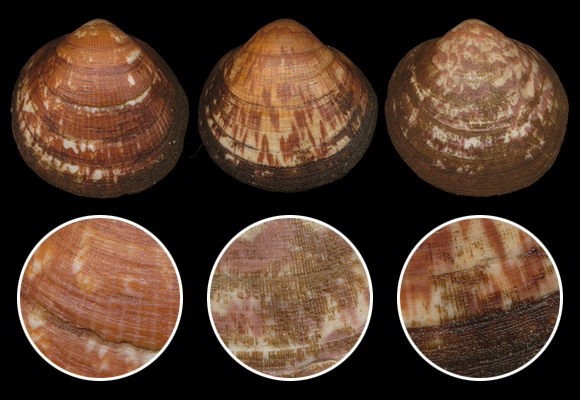
Turton’s examples of Pectunculus pilosus, collected at extreme low tide on sand bank, les Noires, Saint-Malo, N. Brittany, NW. France. 40-41mm. Even the neatly arranged periostracum is present. Other spots are mentioned in the litterature, such as in Thompson & al.: The natural history of Ireland vol. IV, London 1856.
« Dublin coast, Br. Turt. More specimens (but all dead) have come under my notice on the sandy beach at Magilligan than elsewhere. Dredged very sparingly from about 8 to 10 fathoms (sandy ground) in Strangford Lough, W. T.; from several fathoms deeper water at entrance to Belfast Bay, and Glenarm, Mr. Hyndman. “Two specimens, three inches in diameter, were found at Oyster Haven, in 1844,” Mr. J. D. Humphreys. »
« Dublin coast, Br. Turt. More specimens (but all dead) have come under my notice on the sandy beach at Magilligan than elsewhere. Dredged very sparingly from about 8 to 10 fathoms (sandy ground) in Strangford Lough, W. T.; from several fathoms deeper water at entrance to Belfast Bay, and Glenarm, Mr. Hyndman. “Two specimens, three inches in diameter, were found at Oyster Haven, in 1844,” Mr. J. D. Humphreys. »
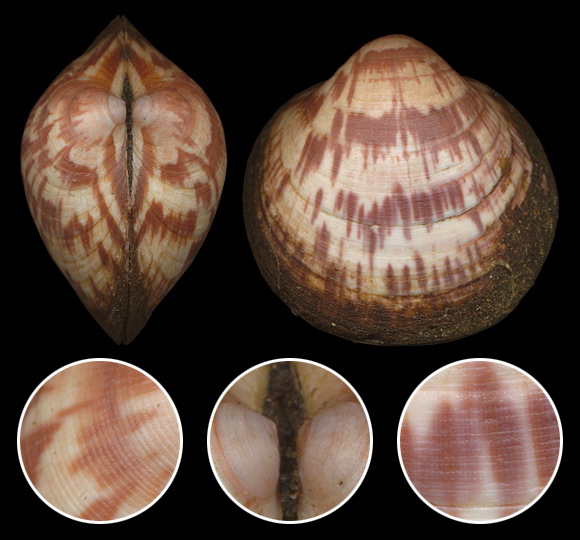
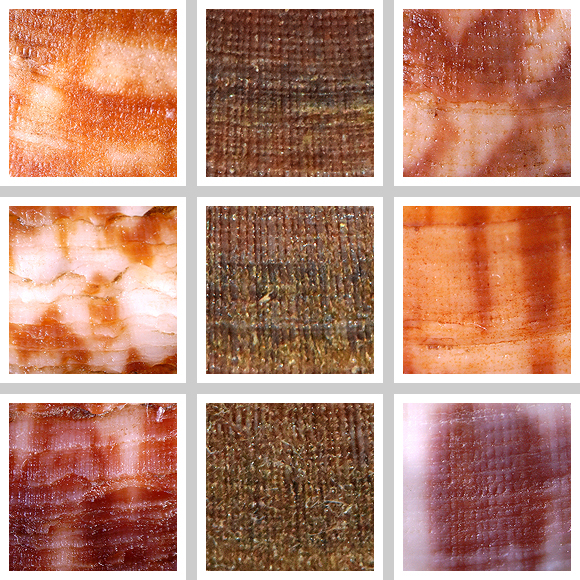
Left: Glycymeris glycymeris from Saint-Cast, N. Brittany.
Center: Glycymeris pilosa from Favone Beach, SE. Corsica.
Right: “pilosa” from Saint-Malo.
In glycymeris there is a fine dotting on a randomly damaged surface made of stacked lamellae; in the mediterranean pilosa the microsculpture is given by a regularly arranged grid of holes on a smooth surface; in the “pilosa” of the breton foreshore, the same pattern appears.
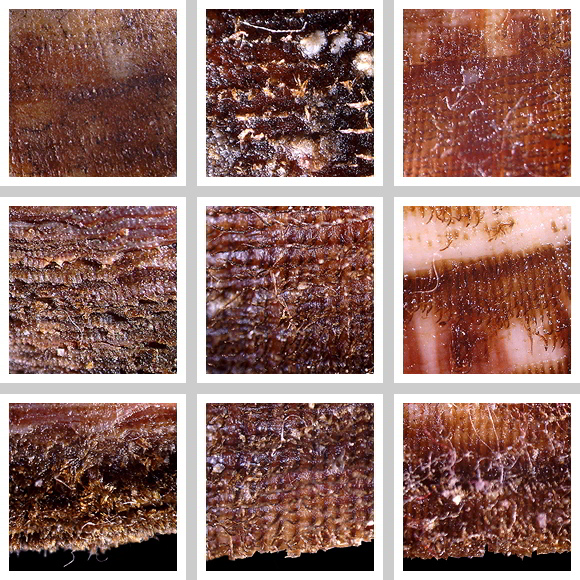
Left: Glycymeris glycymeris from Saint-Cast, N. Brittany.
Center: Glycymeris pilosa from Mylokope, N. Korinthia.
Right: “pilosa” from Saint-Malo.
In glycymeris the hair is almost absent from most of the shell, and subsists only near the ventral margin, in the form of a bushy coverage; in the mediterranean pilosa the periostracum is made up of strong whiskers arranged in a plantation that keeps its ordering trough the very edge; in the “pilosa” of the Breton foreshore, the periostracum is finer, more closely planted, and maintains its ordering nearly up to the edge.
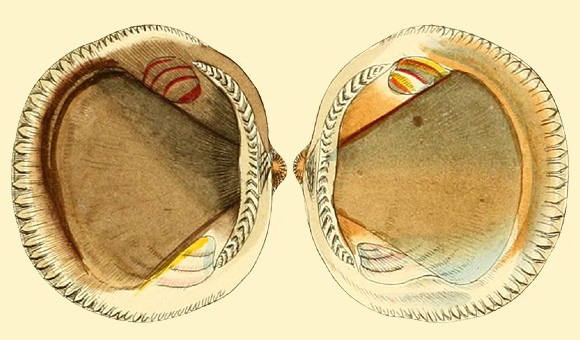
Above: Pectunculus pilosus in L. A. Reeve: Conchologia systematica vol. I, London 1841, plate LXXXIII.
